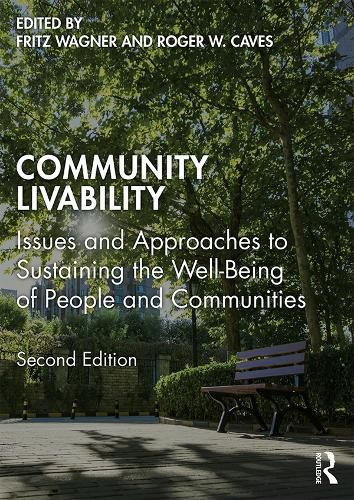Readings Newsletter
Become a Readings Member to make your shopping experience even easier.
Sign in or sign up for free!
You’re not far away from qualifying for FREE standard shipping within Australia
You’ve qualified for FREE standard shipping within Australia
The cart is loading…






What is a livable community? How do you design and develop one? What does government at all levels need to do to support and nurture the cause of livable communities?
Using a blend of theory and practice, the second edition of Community Livability addresses evidence from international, state and local perspectives to explore what is meant by the term livable communities. The second edition contains new chapters from leading academics and practitioners that examine the various factors that constitute a livable community (e.g., the influence and importance of transportation options/alternatives to the elderly, the importance of walkability as a factor in developing a livable and healthy community, the importance of good open space providing for human activity and health, restorative benefits, etc., the importance of coordinated land use and transportation planning), and the relationship between livability and quality of life. A number of chapters focus on livable communities with case studies from an international perspective in the USA, Canada, Australia, Peru, Sweden, South Korea, Japan, and Austria.
$9.00 standard shipping within Australia
FREE standard shipping within Australia for orders over $100.00
Express & International shipping calculated at checkout
What is a livable community? How do you design and develop one? What does government at all levels need to do to support and nurture the cause of livable communities?
Using a blend of theory and practice, the second edition of Community Livability addresses evidence from international, state and local perspectives to explore what is meant by the term livable communities. The second edition contains new chapters from leading academics and practitioners that examine the various factors that constitute a livable community (e.g., the influence and importance of transportation options/alternatives to the elderly, the importance of walkability as a factor in developing a livable and healthy community, the importance of good open space providing for human activity and health, restorative benefits, etc., the importance of coordinated land use and transportation planning), and the relationship between livability and quality of life. A number of chapters focus on livable communities with case studies from an international perspective in the USA, Canada, Australia, Peru, Sweden, South Korea, Japan, and Austria.